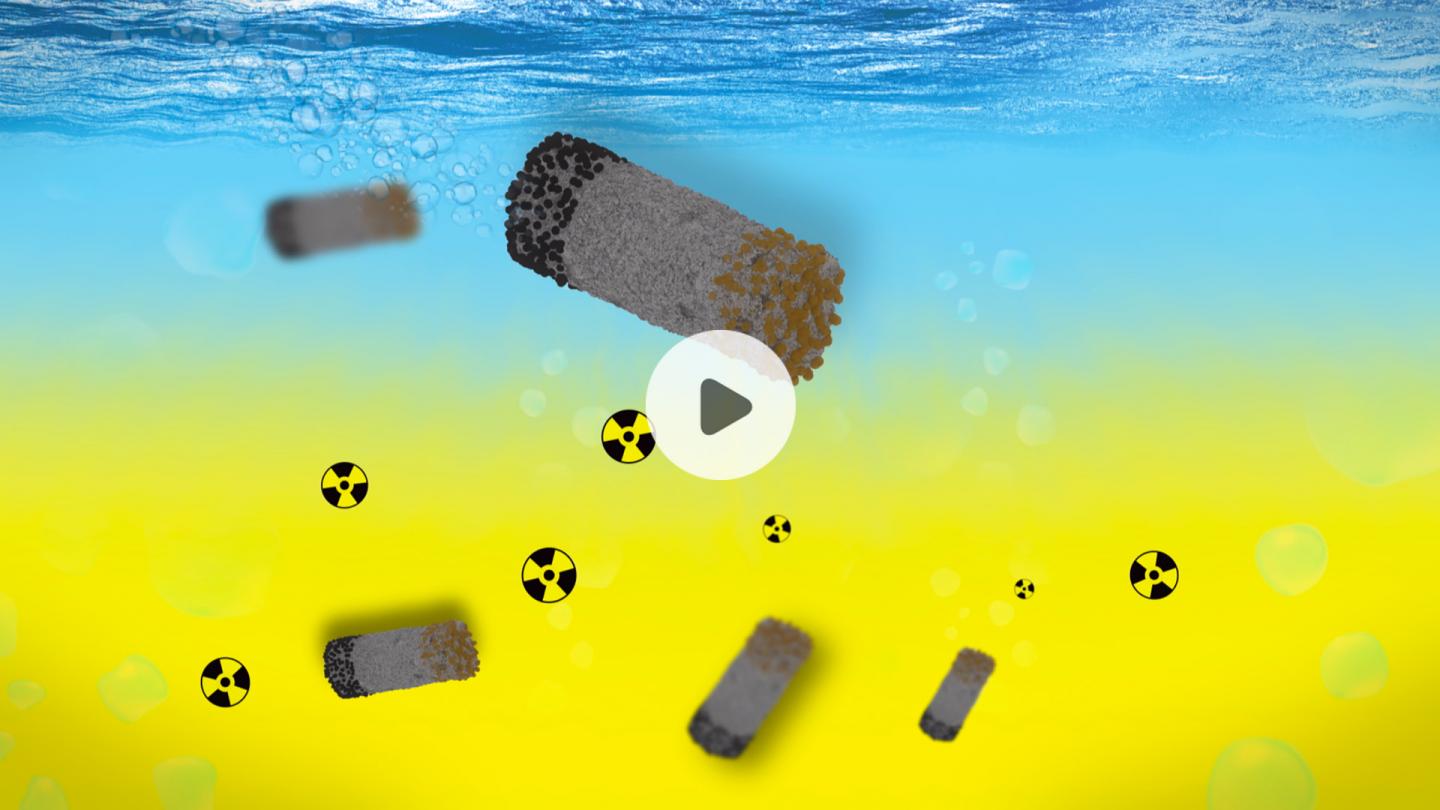
Credit: American Chemical Society
According to some experts, nuclear power holds great promise for meeting the world’s growing energy demands without generating greenhouse gases. But scientists need to find a way to remove radioactive isotopes, both from wastewater generated by nuclear power plants and from the environment in case of a spill. Now, researchers reporting in ACS Nano have developed tiny, self-propelled robots that remove radioactive uranium from simulated wastewater. Watch a video of the microrobots in action here.
The accidental release of radioactive waste, such as what occurred in the Chernobyl and Fukushima nuclear plant disasters, poses large threats to the environment, humans and wildlife. Scientists have developed materials to capture, separate, remove and recover radioactive uranium from water, but the materials have limitations. One of the most promising recent approaches is the use of metal-organic frameworks (MOFs) — compounds that can trap specific substances, including radioactive uranium, within their porous structures. Martin Pumera and colleagues wanted to add a micromotor to a rod-shaped MOF called ZIF-8 to see if it could quickly clean up radioactive waste.
To make their self-propelled microrobots, the researchers designed ZIF-8 rods with diameters about 1/15 that of a human hair. The researchers added iron atoms and iron oxide nanoparticles to stabilize the structures and make them magnetic, respectively. Catalytic platinum nanoparticles placed at one end of each rod converted hydrogen peroxide “fuel” in the water into oxygen bubbles, which propelled the microrobots at a speed of about 60 times their own length per second. In simulated radioactive wastewater, the microrobots removed 96% of the uranium in an hour. The team collected the uranium-loaded rods with a magnet and stripped off the uranium, allowing the tiny robots to be recycled. The self-propelled microrobots could someday help in the management and remediation of radioactive waste, the researchers say.
###
The authors acknowledge funding from the Advanced Functional Nanorobots program, the Czech Science Foundation, the Ministry of Education, Youth and Sports of the Czech Republic and the Neuron Benevolent Fund for Support of Science.
The abstract that accompanies this study is available here.
The American Chemical Society, the world’s largest scientific society, is a nonprofit organization chartered by the U.S. Congress. ACS is a global leader in providing access to chemistry-related information and research through its multiple databases, peer-reviewed journals and scientific conferences. ACS does not conduct research, but publishes and publicizes peer-reviewed scientific studies. Its main offices are in Washington, D.C., and Columbus, Ohio.
To automatically receive news releases from the American Chemical Society, contact [email protected].
Follow us on Twitter | Facebook
Media Contact
Katie Cottingham
[email protected]
301-775-8455
Related Journal Article
http://dx.





